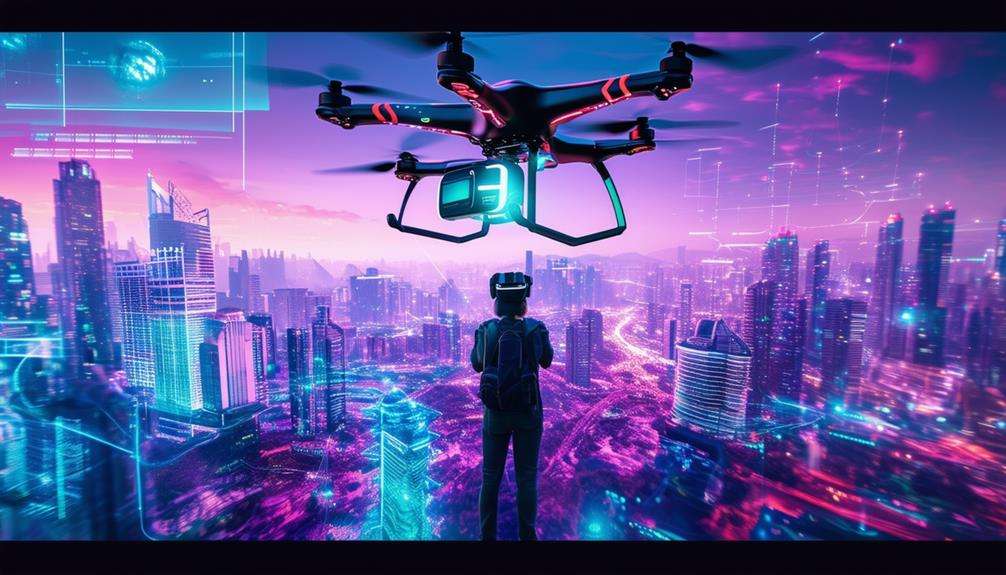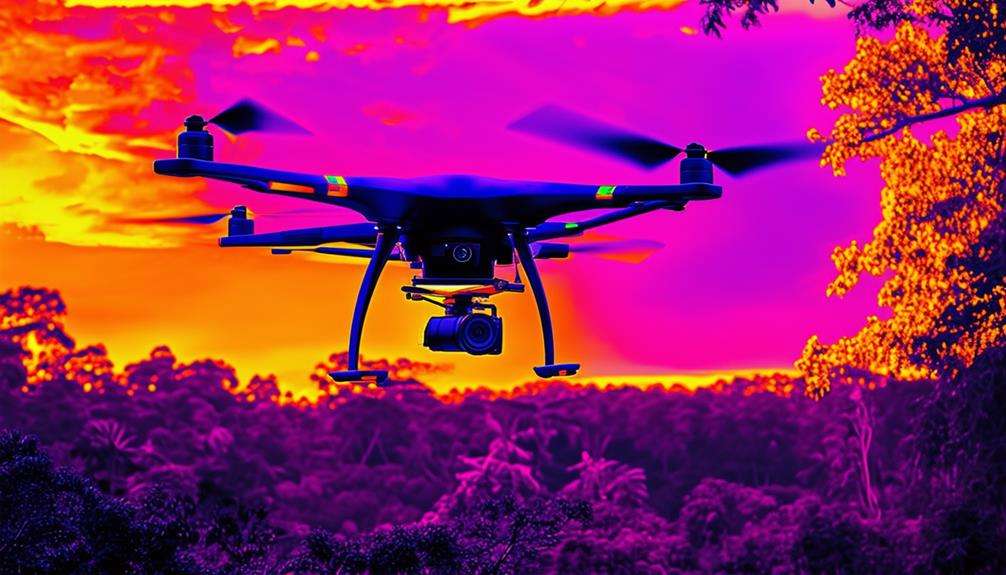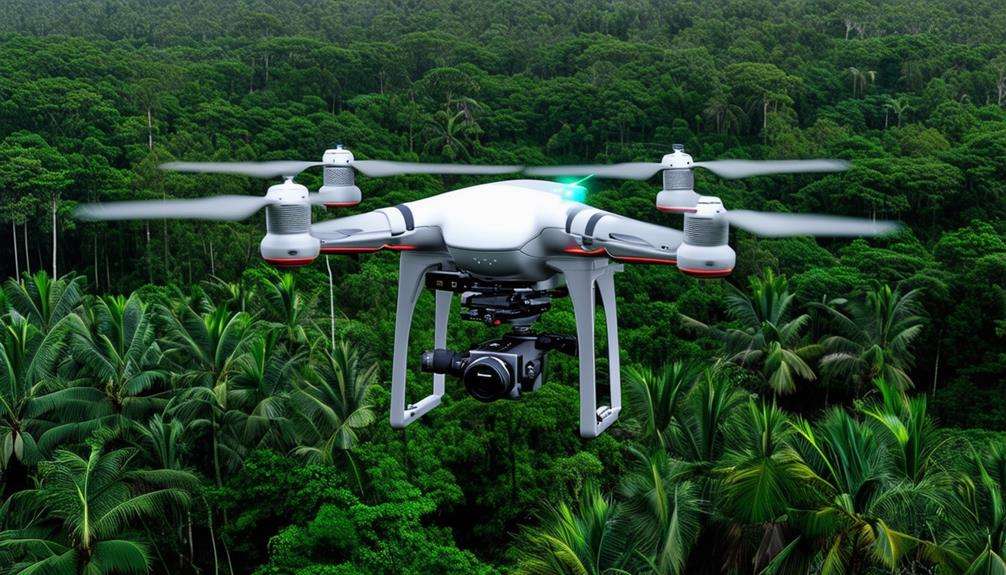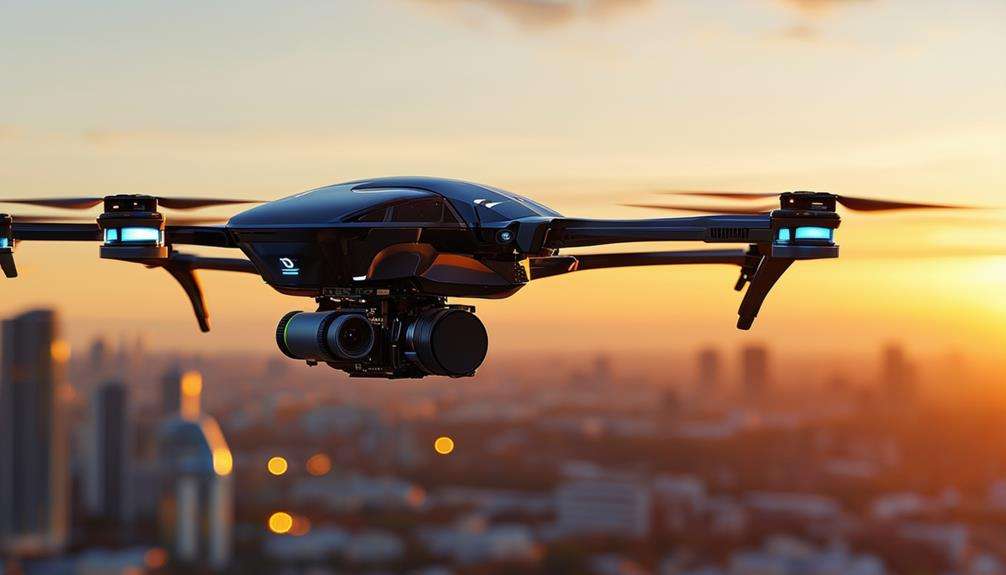Exploring Drone Communication Systems and Data Links
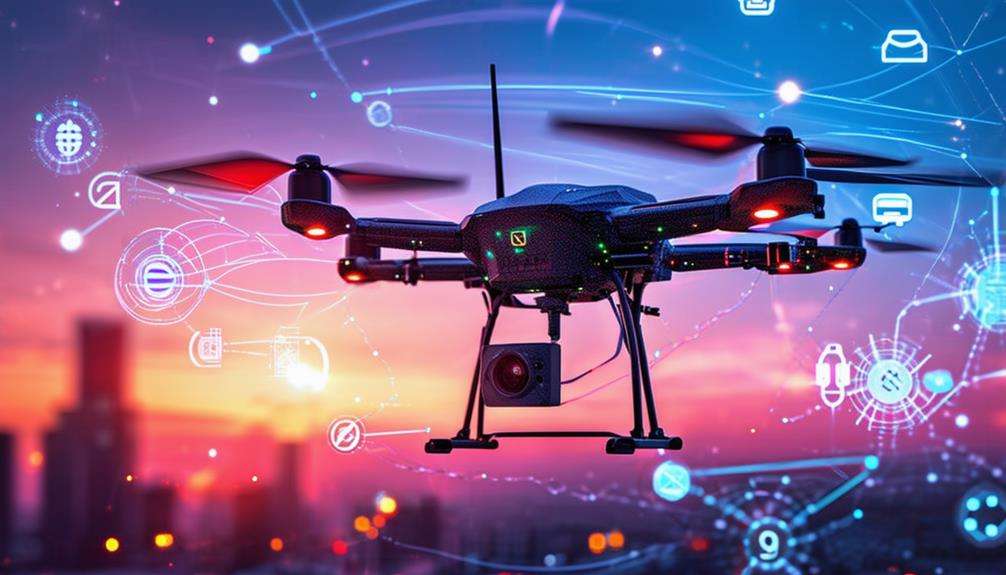
Exploring drone communication systems and data links requires a solid grasp of fundamental concepts for seamless operations. Key considerations include wireless standards such as LTE and 5G, which affect range and network performance.
Choosing the appropriate RF frequencies is crucial for ensuring reliability and efficiency. How do these elements combine to provide real-time control and monitoring? Let's examine the critical factors that enhance drone performance and address potential challenges.
Drone Communication Basics
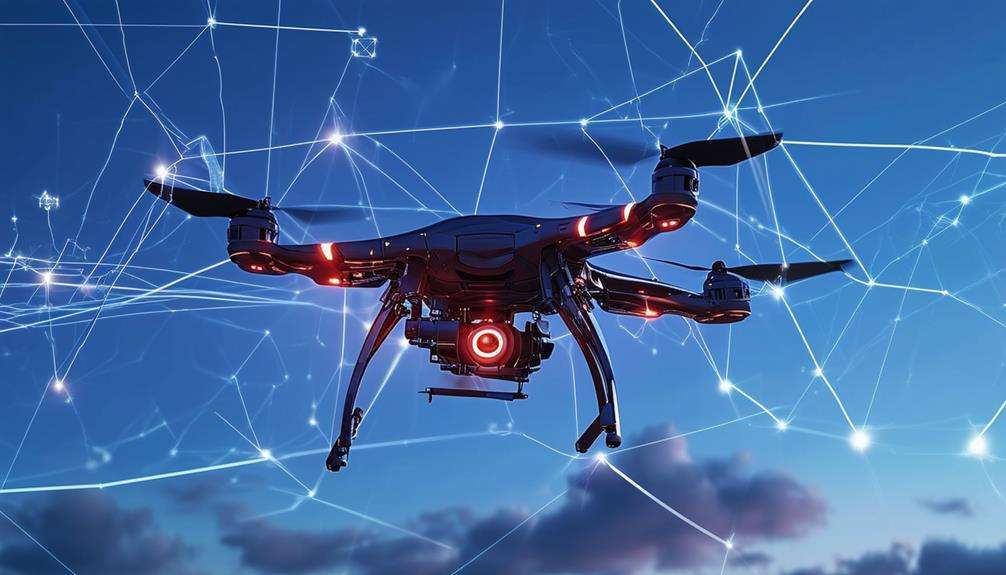
Drone communication fundamentals center around data link systems that transmit crucial information such as location, flight time, and airspeed via RF (radio frequency) transmission. These data links are essential to drone operations, keeping operators informed about their drone's status during flights.
Ground Control Stations (GCS) are integral to this communication network. Using a GCS, operators can control and monitor their drones in real-time. Acting as the primary interface, the GCS enables the transmission of commands and the reception of vital data through RF transmission. This ensures operators receive up-to-the-minute information on their drone's position and performance metrics.
Live video transmission is another critical aspect of drone communication. Data link systems allow operators to view real-time footage captured by the drone, enhancing situational awareness and control. Various RF frequencies, such as 900MHz, 3GHz, 4GHz, and 8GHz, offer different ranges and video quality, making it essential to select the appropriate frequency for specific needs.
Compliance with FCC regulations is mandatory for drone operation. Adhering to these rules ensures that drone operations are both effective and legally compliant, allowing for the use of specified frequencies without interference or legal issues.
Wireless Standards
Adopting new wireless standards such as LTE and 5G can significantly enhance drone communication systems by improving range, speed, and reliability for command, telemetry, and data transfer. LTE offers robust coverage, ensuring connectivity even in remote areas, thus expanding operational scope beyond the limitations of Wi-Fi-based controllers.
5G further enhances these capabilities by providing lower latency and faster speeds, crucial for real-time data processing and transmission. However, 5G's benefits depend on a denser network of cellular towers, which mightn't yet be widespread. As 5G infrastructure grows, it will become increasingly valuable for maintaining seamless communication, especially in urban or densely populated areas.
While SATCOM offers global communication capabilities, it's often bulky and better suited for larger drones. By leveraging LTE and 5G, you can create a balanced, efficient, and scalable communication system for various drone applications, making operations more effective and versatile.
LTE and 5G
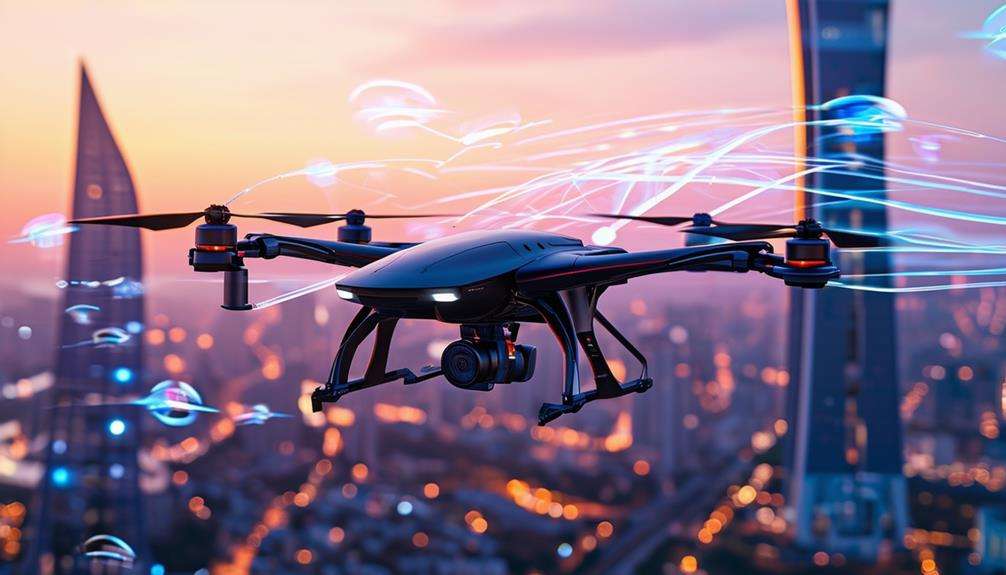
When considering LTE and 5G for drone communication, you'll immediately recognize the advantages in network coverage expansion, reduced latency, and increased speeds. These technologies ensure that your drone operations are more efficient and reliable, particularly for applications requiring real-time data transfer.
Network Coverage Expansion
Leveraging LTE and 5G technologies can significantly enhance network coverage for drone communication systems. LTE connectivity enables Beyond Visual Line of Sight (BVLOS) operations, vastly expanding the operational range for drones. Both LTE and 5G offer notable improvements in data throughput, facilitating the rapid and reliable transmission of large amounts of data. This is crucial for applications such as real-time video streaming, complex telemetry data, and command control.
LTE and 5G technologies also support various cellular modems like RockREMOTE and Botlink XRD2, which can be seamlessly integrated into drone systems. These modems ensure robust connectivity, vital for maintaining continuous communication between the drone and the ground control station.
Here's a quick look at the emotional impacts of expanded network coverage:
| Emotion | Before LTE/5G Coverage | After LTE/5G Coverage |
|---|---|---|
| Confidence | Low | High |
| Reliability | Uncertain | Assured |
| Capability | Limited | Extensive |
| Innovation | Stagnant | Flourishing |
| Safety | Compromised | Enhanced |
Latency and Speed Benefits
With LTE and 5G, you benefit from lower latency and faster speeds, which are critical for real-time drone communication. These advanced networks significantly enhance the performance of unmanned aerial systems by enabling swift and efficient data transmission. This is particularly crucial for time-sensitive missions such as cargo delivery or public safety operations, where every millisecond counts. LTE and 5G minimize the delay between your commands and the drone's response, ensuring seamless interaction.
LTE provides extensive coverage, making it ideal for long-range applications, while 5G offers even lower latency and higher data throughput. However, 5G's denser cellular tower requirements can affect coverage in certain areas. Nevertheless, 5G's ability to handle more devices simultaneously makes it a transformative technology for unmanned aerial operations. Utilizing LTE allows for beyond visual line of sight (BVLOS) operations, significantly extending the range and capabilities of drones—particularly when Wi-Fi's limited range is a constraint.
Range Limitations
Range limitations in drone communication systems are primarily influenced by the choice of data link frequencies and their inherent characteristics. When setting up your drone, the type of data link system selected will significantly affect communication range and quality.
Lower frequencies, such as 900MHz, excel at penetrating obstacles, enabling the drone to maintain communication over extended distances. However, these frequencies often don't support high data rates, which can limit video quality.
Conversely, higher frequencies, like 3GHz, offer impressive ranges of over 40 miles but may struggle with obstacle penetration and video transmission quality, making them less suitable for real-time, high-definition video feeds.
Telemetry data links operating at 400MHz and 900MHz provide excellent long-range capabilities but have restricted data rates, potentially limiting the amount of information transmitted simultaneously.
Understanding the range capabilities of different radio frequencies is crucial for optimizing your drone's communication system to meet specific needs, whether for long-distance control, high-quality video streaming, or reliable telemetry data.
Network Challenges
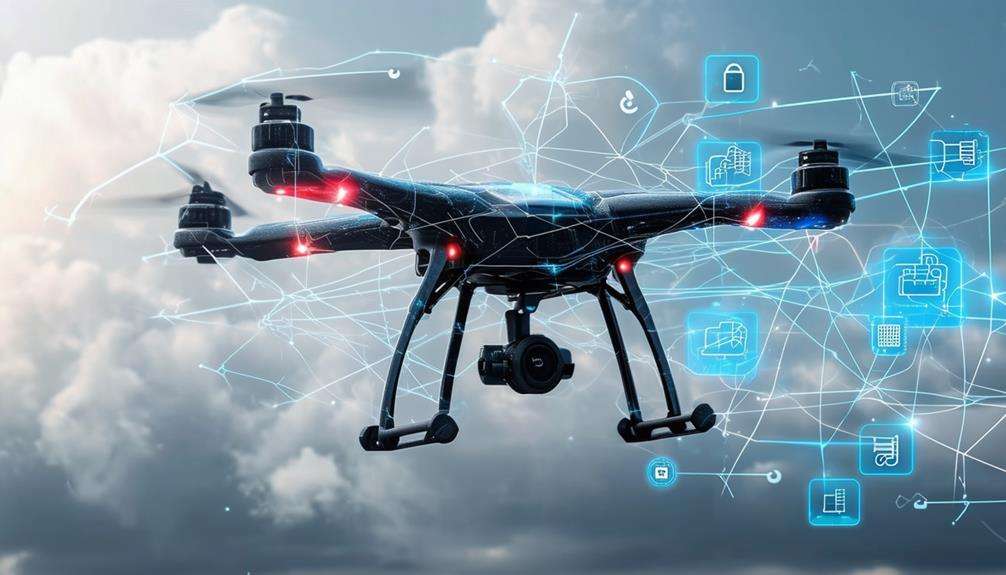
Drone communication systems frequently encounter network challenges that compromise data transmission efficiency. The mobility of drones can disrupt stable data communication, complicating the maintenance of consistent connections. Obstacles like buildings and trees, along with various sources of interference, exacerbate these issues, leading to delays, packet loss, and reduced reliability in data communication networks.
To mitigate these challenges, existing IoT and drone system protocols are often utilized. However, these protocols may not be fully equipped to handle the unique mobility and interference problems specific to drone operations. Therefore, focused efforts on overcoming these data communication challenges are essential.
A proposed solution, Drone-enabled Data Communication for IoT (DDC-IoT), aims to enhance data communication performance. Implementing DDC-IoT can lead to improved efficiency and reliability in drone networks.
Here's a concise comparison of the challenges and their corresponding solutions:
| Challenge | Solution |
|---|---|
| Mobility disruptions | DDC-IoT implementation |
| Obstacles and interference | Advanced routing protocols |
| Delays in data transmission | Optimized network design |
| Packet loss | Error correction methods |
| Reduced reliability | Redundant communication |
Technology Benefits
Addressing network challenges is crucial, but understanding the technological benefits of modern communication systems reveals significant advancements in drone operations. With LTE and 5G, faster speeds and lower latency revolutionize drone communication, enhancing real-time data streaming and accelerating decision-making processes.
Cellular connectivity offers long-range and high data throughput applications, boosting the efficiency of drone missions. Lightweight LTE modems minimize impact on the drone's Size, Weight, and Power (SWaP) budgets, allowing for additional payload or extended flight duration. This is particularly advantageous for Beyond Visual Line of Sight (BVLOS) operations, enabling control over greater distances without direct visual contact.
Furthermore, steerable beamforming antennas effectively mitigate uplink and downlink interference, ensuring stable and reliable communication links. This ensures seamless and uninterrupted data processing and transmission. Integrating these advanced communication systems not only improves operational efficiency but also expands the scope and capabilities of drone missions.
Conclusion
You now have a comprehensive understanding of drone communication systems and data links. By mastering the fundamentals and leveraging LTE and 5G technologies, while considering range limitations and network challenges, you're well-equipped to optimize these systems.
Embracing these advancements ensures efficient and reliable drone operations, paving the way for progress in various fields. Ready your drone for enhanced performance and maximize the potential of your aerial endeavors!

